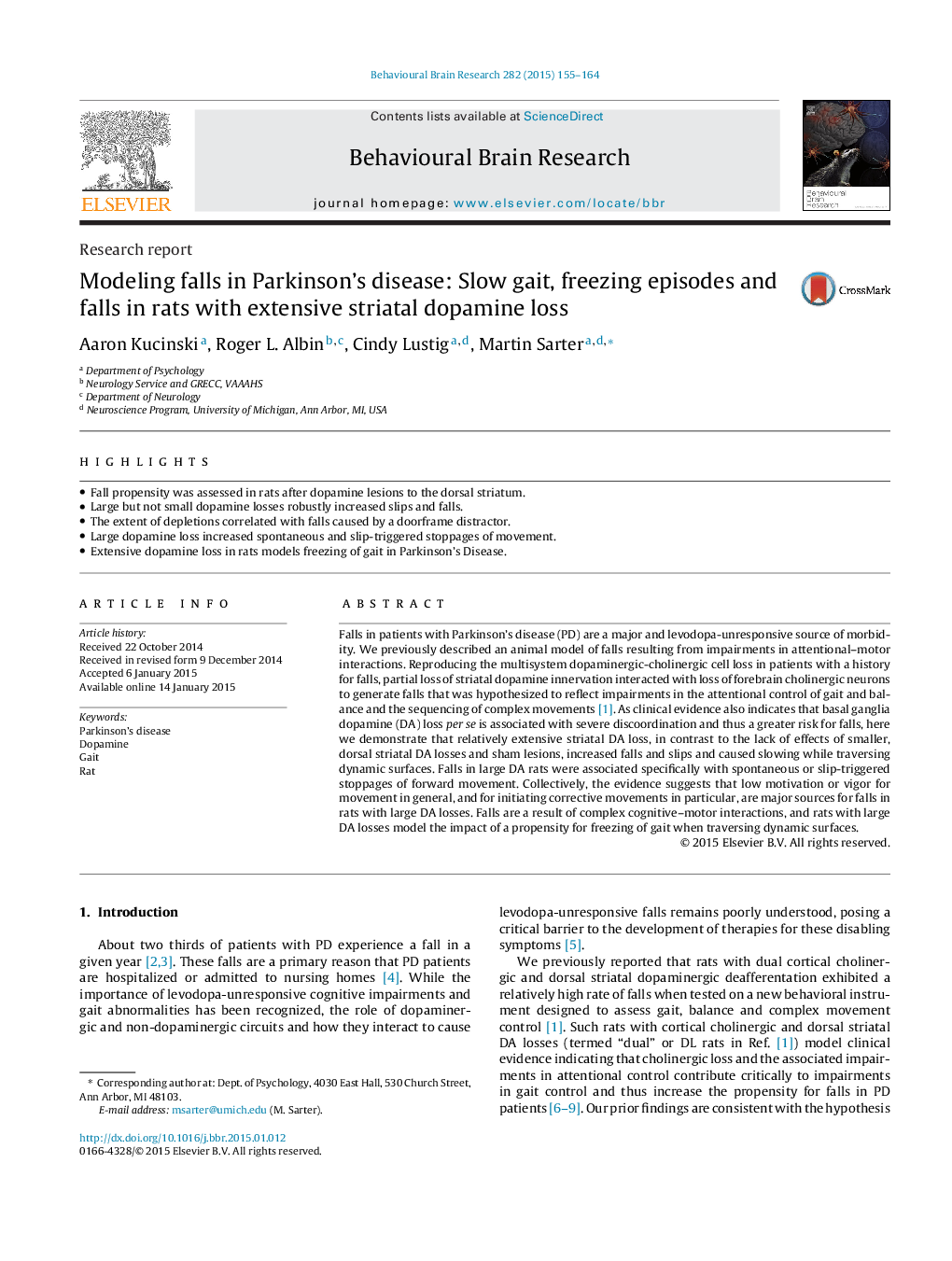| کد مقاله | کد نشریه | سال انتشار | مقاله انگلیسی | نسخه تمام متن |
|---|---|---|---|---|
| 6257281 | 1612950 | 2015 | 10 صفحه PDF | دانلود رایگان |
- Fall propensity was assessed in rats after dopamine lesions to the dorsal striatum.
- Large but not small dopamine losses robustly increased slips and falls.
- The extent of depletions correlated with falls caused by a doorframe distractor.
- Large dopamine loss increased spontaneous and slip-triggered stoppages of movement.
- Extensive dopamine loss in rats models freezing of gait in Parkinson's Disease.
Falls in patients with Parkinson's disease (PD) are a major and levodopa-unresponsive source of morbidity. We previously described an animal model of falls resulting from impairments in attentional-motor interactions. Reproducing the multisystem dopaminergic-cholinergic cell loss in patients with a history for falls, partial loss of striatal dopamine innervation interacted with loss of forebrain cholinergic neurons to generate falls that was hypothesized to reflect impairments in the attentional control of gait and balance and the sequencing of complex movements [1]. As clinical evidence also indicates that basal ganglia dopamine (DA) loss per se is associated with severe discoordination and thus a greater risk for falls, here we demonstrate that relatively extensive striatal DA loss, in contrast to the lack of effects of smaller, dorsal striatal DA losses and sham lesions, increased falls and slips and caused slowing while traversing dynamic surfaces. Falls in large DA rats were associated specifically with spontaneous or slip-triggered stoppages of forward movement. Collectively, the evidence suggests that low motivation or vigor for movement in general, and for initiating corrective movements in particular, are major sources for falls in rats with large DA losses. Falls are a result of complex cognitive-motor interactions, and rats with large DA losses model the impact of a propensity for freezing of gait when traversing dynamic surfaces.
Journal: Behavioural Brain Research - Volume 282, 1 April 2015, Pages 155-164
